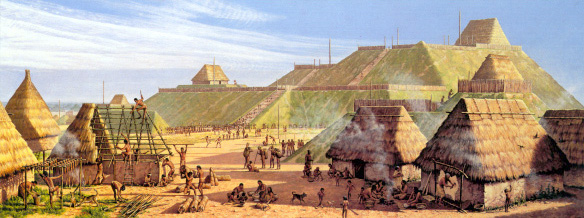By Glenn Hodges
Our ignorance has deep roots. The first person to write a detailed account of Cahokia's mounds was Henry Brackenridge, a lawyer and amateur historian who came upon the site and its massive central mound while exploring the surrounding prairie in 1811. "I was struck with a degree of astonishment, not unlike that which is experienced in contemplating the Egyptian pyramids," he wrote. "What a stupendous pile of earth! To heap up such a mass must have required years, and the labors of thousands." But newspaper accounts of his discovery were widely ignored. He complained of this in a letter to his friend former President Thomas Jefferson, and with friends in such high places, word of Cahokia did eventually get around. Unfortunately it was not word most Americans, including subsequent Presidents, were very interested in hearing. The United States was trying to get Indians out of the way, not appreciate their history. Andrew Jackson's Indian Removal Act of 1830, which ordered the relocation of eastern Indians to land west of the Mississippi, was premised on the idea that Indians were nomadic savages who couldn't make good use of land anyway. Evidence of an ancient Indian city—one that rivaled the size of Washington, D.C., at the time—would have mucked up the story line.


No comments:
Post a Comment
Note: Only a member of this blog may post a comment.